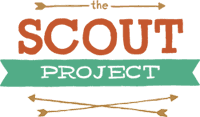Blackberries. Raspberries. Boysenberries. Marion berries. These are just a few of the hundreds — if not thousands — of flowering, fruiting plants more commonly known as brambles.
As a whole, the berries that grow on brambles are probably the most well-known wild food. They can be eaten fresh, or easily turned into syrup, used as pie filling, or prepared a number of other different ways.
Brambles are extremely common. The plants are usually found on the edges of meadows and fields, but can grow almost anywhere, including woodlands, hedgerows, gardens, and even landfills.
Brambles are easy to identify. The most obviously clue are the berries themselves, which turn from green to juicy red, purple, or black. Technically in the rose family, brambles have thick, woody stems with prickles or thorns. The leaves have jagged edges.
The berries are easy to harvest. If you plan on collecting a huge batch, wear gloves and use pinking shears. Having both hands free for picking might help, too, so consider attaching a container to your belt.
The berries are flavorful and nutritious. This feel-good food is not only an antioxidant, but it's an excellent source of vitamin C, maganese, and potassium.
This plant isn't just for humans. Many species of birds love to eat the berries and they also often find protection for their nests in the dense bushes — which is why a range of other small animals also find their homes in brambles.
Recipes using brambles: Although these recipes call for specific berries, most fruits that come from brambles can be substituted for one another.
- Blackberry Jam and a Breakfast Cake (meat free)
- Blackberry Bramble Cocktail (dairy free, gluten free, meat free)
- Brambleberry Shortbread Tart with Marscapone (meat free)
- Gluten-free Boysenberry Peach Pie (gluten free, meat free)
- Homemade Boysenberry Sorbet with Verbena (dairy free, gluten free, meat free)
- Raspberry Infused Vodka (dairy free, gluten free, meat free)
Warning: Only consume plants you can positively identify and know are safe to eat.
Photo by gingerboximages, Flickr. Sources: Wikipedia, The Wildlife Trusts, and Wild Man Steve Brill.

